Key takeaways:
- Resource optimization in music education involves collaboration, creativity, and utilizing community resources effectively.
- Leveraging technology and creating shared resource systems among educators can enhance teaching efficiency and broaden access to learning materials.
- Building partnerships with local businesses and organizing community events can enrich student experiences and foster a sense of belonging.
- Encouraging student participation through peer mentoring and resource sharing empowers students and boosts their confidence in their musical abilities.
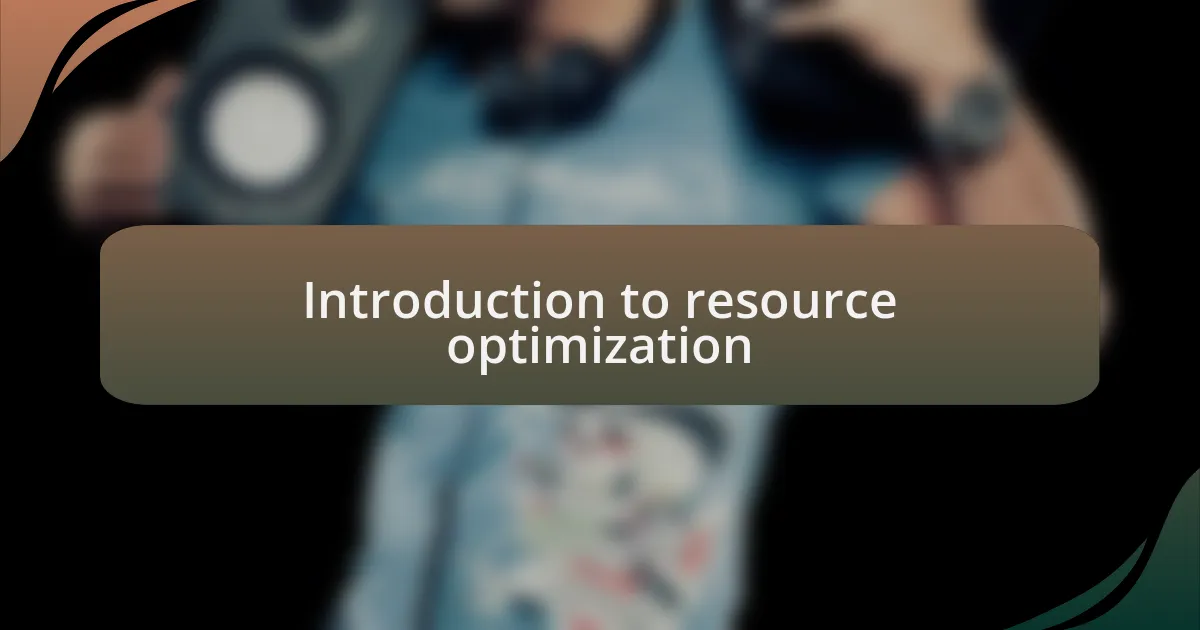
Introduction to resource optimization
Resource optimization is about maximizing efficiency and effectiveness in using the resources available to us. I remember when starting my journey in music education, trying to balance limited budgets while maintaining high standards of teaching. It can be daunting, but understanding resource optimization can help turn challenges into opportunities.
Think about it: How can we create a vibrant music program with minimal resources? I discovered that a thoughtful approach could unlock untapped potential. For instance, collaborating with local musicians not only enriches student experience but also reduces costs associated with hiring professionals.
As I navigated through various options, it became clear that resource optimization isn’t just about saving money—it’s about creating meaningful connections and fostering creativity. Reflecting on my experiences, I often ask myself: What innovative solutions can arise when we rethink how we use what we have?

Key resources for music educators
When it comes to music education, one of the most valuable resources I’ve encountered is the community itself. I vividly recall a time when I teamed up with a nearby school to share instruments and teach joint workshops. This collaboration not only enhanced our programs but also created a sense of camaraderie among students. Have you ever thought about how pooling resources with fellow educators can spark creativity? It’s a game-changer.
Another key resource that stands out to me is technology. I recently started incorporating online platforms for group lessons. This approach not only broadened the reach of my teaching but also provided a cost-effective solution for students in remote areas. It’s fascinating to witness how a simple app can connect budding musicians from various backgrounds, isn’t it? Technology can bridge gaps in ways I hadn’t imagined.
Lastly, I believe accessibility to teaching materials is crucial. I often find treasure troves of free or low-cost sheet music online that cater to different skill levels. Recently, I discovered an incredible site that compiles resources from various artists and educators. Knowing that I can offer students diverse musical experiences without breaking the bank is empowering. How do you ensure you’re utilizing such resources effectively? I encourage you to explore and make the most out of what’s out there!
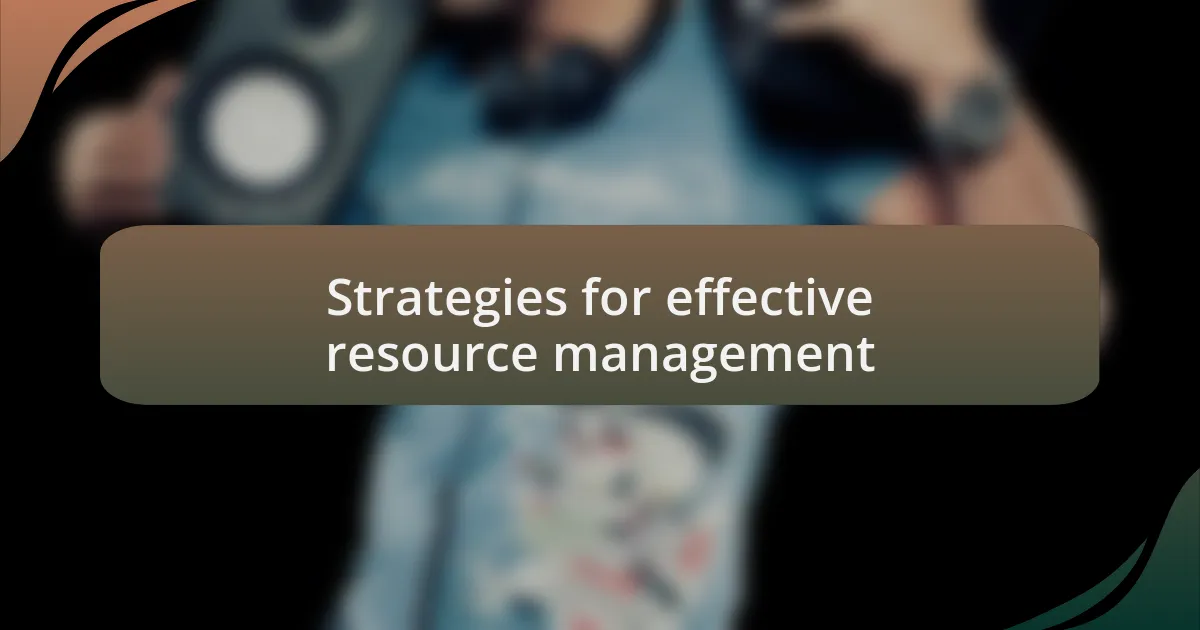
Strategies for effective resource management
Managing resources effectively is essential in music education. One strategy that has greatly benefited me is prioritizing collaboration. For instance, I once joined forces with local music stores to provide students with discounted rentals. Not only did this alleviate financial burdens, but it also fostered a sense of community support that encourages students to pursue their musical passions. Isn’t it empowering to see how local businesses can play a role in educational success?
Another effective strategy I’ve discovered is to create a shared digital library of resources among colleagues. I remember setting up a Google Drive where everyone could contribute their favorite lesson plans, worksheets, and pieces of music. This simple act not only saved countless hours of time but also led to the development of new, innovative cross-curricular projects. Have you considered how sharing knowledge can enrich your teaching toolkit?
Finally, regularly evaluating resource usage is critical. Earlier this year, I took the time to assess which instruments were underutilized in my program. To my surprise, I found a collection of less popular instruments that piqued the interest of several students once we showcased them during a hands-on workshop. This experience reminded me of the power of visibility; sometimes, it’s about presenting what you have in fresh and exciting ways. How often do you check in on your resources to ensure they’re being utilized to their fullest potential?
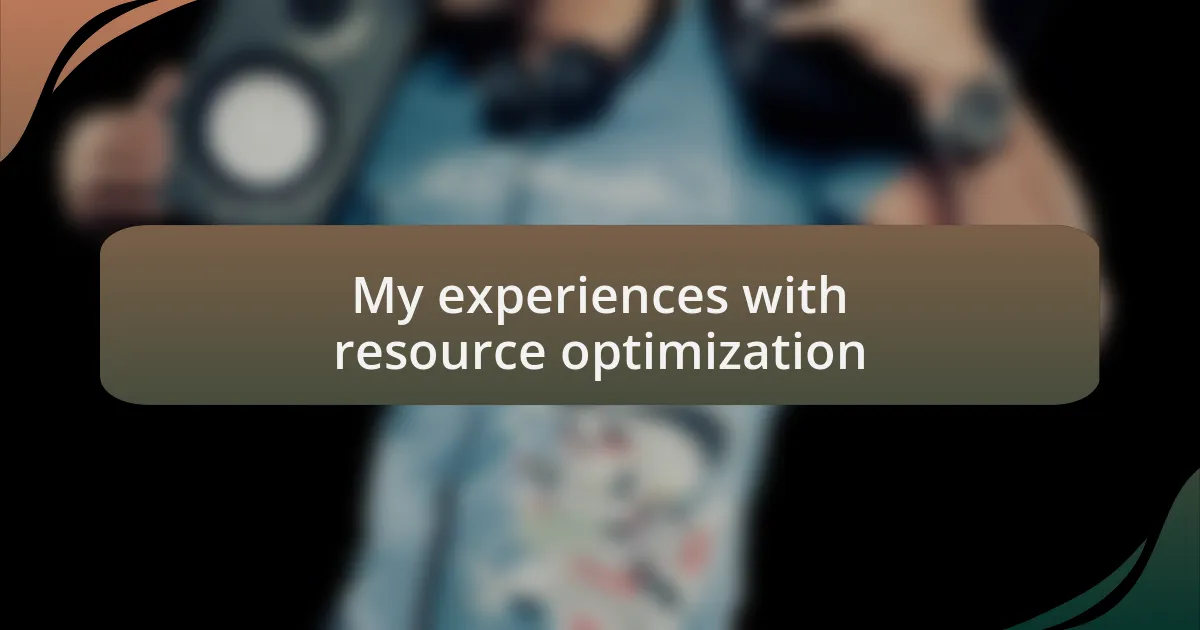
My experiences with resource optimization
Throughout my journey with resource optimization, I’ve learned the importance of adopting a mindset of creativity. For example, when faced with a tight budget, I decided to organize a “musical recycling” event where students could trade unused instruments and equipment. Seeing the joy on their faces as they discovered new instruments was incredibly rewarding. Have you ever experienced that thrill of finding something new in what you thought was old?
One memorable instance occurred when I reimagined our classroom setup. Instead of traditional desks, we transformed the space into a flexible area with movable furniture. This change not only energized the students but also allowed for more dynamic group work and collaboration among them. It was fascinating to see how a simple shift in environment could breathe new life into our lessons. How might your surroundings influence your educational experience?
I’ve also realized that harnessing technology can be a game changer in resource optimization. I vividly recall implementing an online scheduling tool for instrument bookings, which streamlined the process and significantly reduced scheduling conflicts. This experience taught me that even small adjustments can lead to greater efficiency. Have you looked into tech solutions that could simplify your resource management?
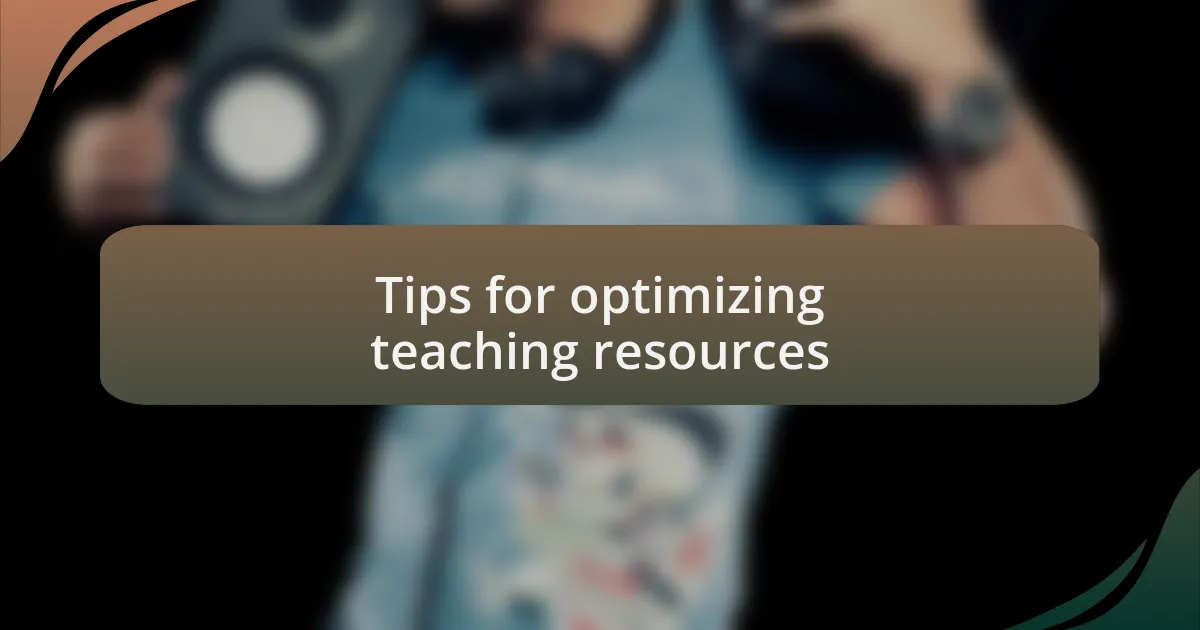
Tips for optimizing teaching resources
One effective way to optimize teaching resources is to leverage community partnerships. I once formed a collaboration with a local music store, which allowed my students access to instrument loans at little to no cost. This not only enriched their learning experience but also fostered a sense of community involvement. Have you reached out to local businesses for potential partnerships that could benefit your classroom?
Creating a resource-sharing system among educators can greatly enhance resource optimization. I initiated a monthly meeting with fellow teachers where we exchanged materials, lesson plans, and even instruments. The camaraderie we built was just as valuable as the resources we shared. How can you foster collaboration among your peers to maximize what’s available?
Lastly, I discovered the power of digital resources for music education. By curating a collection of free online tutorials and sheet music, I offered my students additional materials that complemented their learning. I remember one student expressing how much more confident they felt practicing at home with these resources. Have you explored the wealth of free digital content available that could enrich your teaching repertoire?
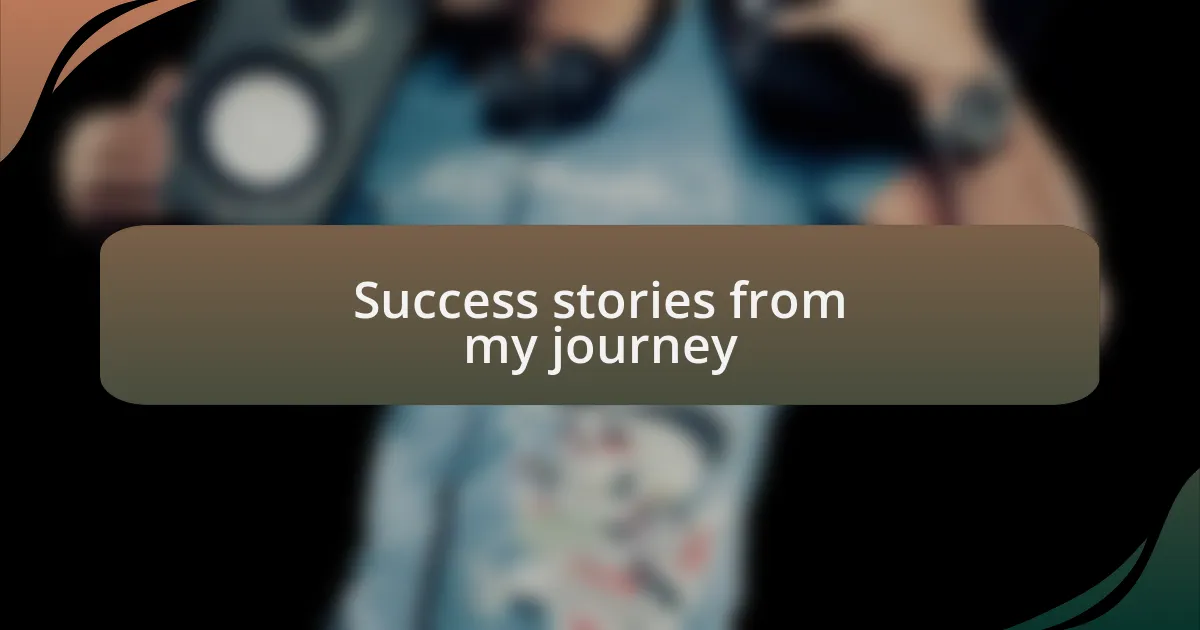
Success stories from my journey
In one memorable instance during my journey, I organized a community concert that showcased my students’ talents while highlighting their hard work. The event drew in a larger audience than I anticipated, and seeing my students beam with pride as they performed made every moment of planning worthwhile. Have you considered how a community event could showcase your students’ progress and build their confidence?
I also recall a time when a struggling student transformed his outlook on music through a peer mentorship program I facilitated. He was initially hesitant and kept to himself, but pairing him with a more confident classmate helped him flourish. Witnessing that transformation not only filled me with joy but also reinforced the power of supportive relationships in education. What steps can you take to create an atmosphere where students uplift each other?
In another success story, I implemented a weekly “resource hour,” where students could bring in their own instruments and showcase what they had learned. This not only encouraged creativity but also built a strong sense of ownership among them. I still remember the excitement in the room when one shy student finally took the stage and played a piece he’d been practicing for weeks. How can you create opportunities for your students to express themselves and gain confidence in their abilities?